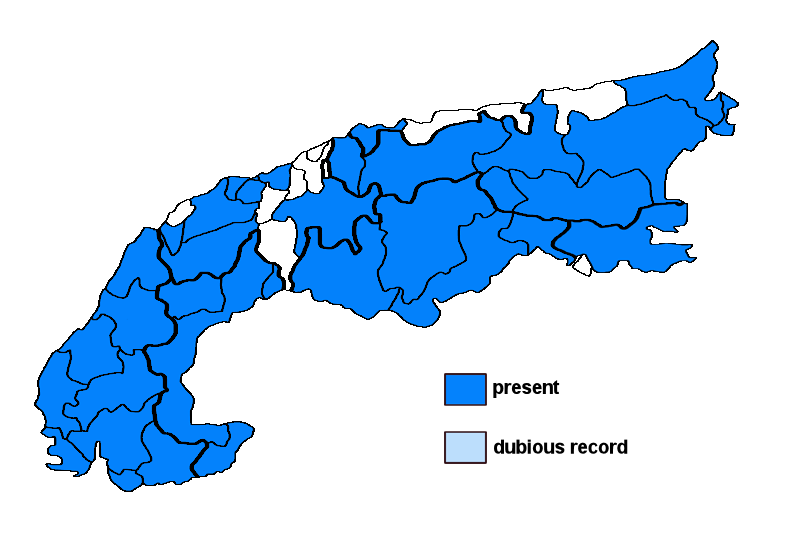Lobothallia radiosa (Hoffm.) Hafellner
Syn.: Aspicilia radiosa (Hoffm.) Poelt & Leuckert, Aspicilia subcircinata (Nyl.) Coppins, Lecanora circinata (Pers.) Ach., Lecanora radiosa (Hoffm.) Schaer., Lecanora subcircinata Nyl., Lichen radiosus Hoffm., Placodium circinatum (Pers.) Gray, Placodium radiosum (Hoffm.) DC., Placodium subcircinatum (Nyl.) Arnold, Psoroma circinatum (Pers.) Flagey, Squamaria circinata (Pers.) Anzi, Squamaria subcircinata (Nyl.) H. Olivier
Lichenised.
Substrate: siliceous rocks, calciferous rocks
Altitudinal range: from the mesomediterranean belt (potential vegetation: evergreen broad-leaved forests dominated by Quercus ilex) to the alpine belt (potential vegetation: treeless Alpine grasslands and tundras, to the lower limit of perennial snow and the equilibrium line of glaciers)
Note: a widespread holarctic lichen with a very wide altitudinal and latitudinal range, and with correspondingly broad ecological requirements, found on a wide variety of substrata, including basic siliceous rocks, limestone, dolomite, more rarely brick, roofing tiles and mortar; common throughout the Alps. The species, in its present circumscription, is chemically variable: the forms with norstictic acid, corresponding to Aspicilia subcircinata, may represent just a chemotype.
Austria: Vorarlberg; Tirol; Salzburg; Kärnten; Steiermark; Niederösterreich (incl. Wien); Burgenland; Germany: Schwaben; Switzerland: Bern; Graubünden; Luzern; Schwyz; Unterwalden; Vaud; Valais; France: Alpes-de-Haute-Provence; Haute-Alpes; Alpes-Maritimes; Drôme; Isère; Savoie; Haute-Savoie; Vaucluse; Var; Italy: Friuli; Veneto; Trentino Alto Adige; Lombardia; Piemonte; Valle d'Aosta; Liguria; Slovenia: Alpine and Pre-Alpine Slovenia;





